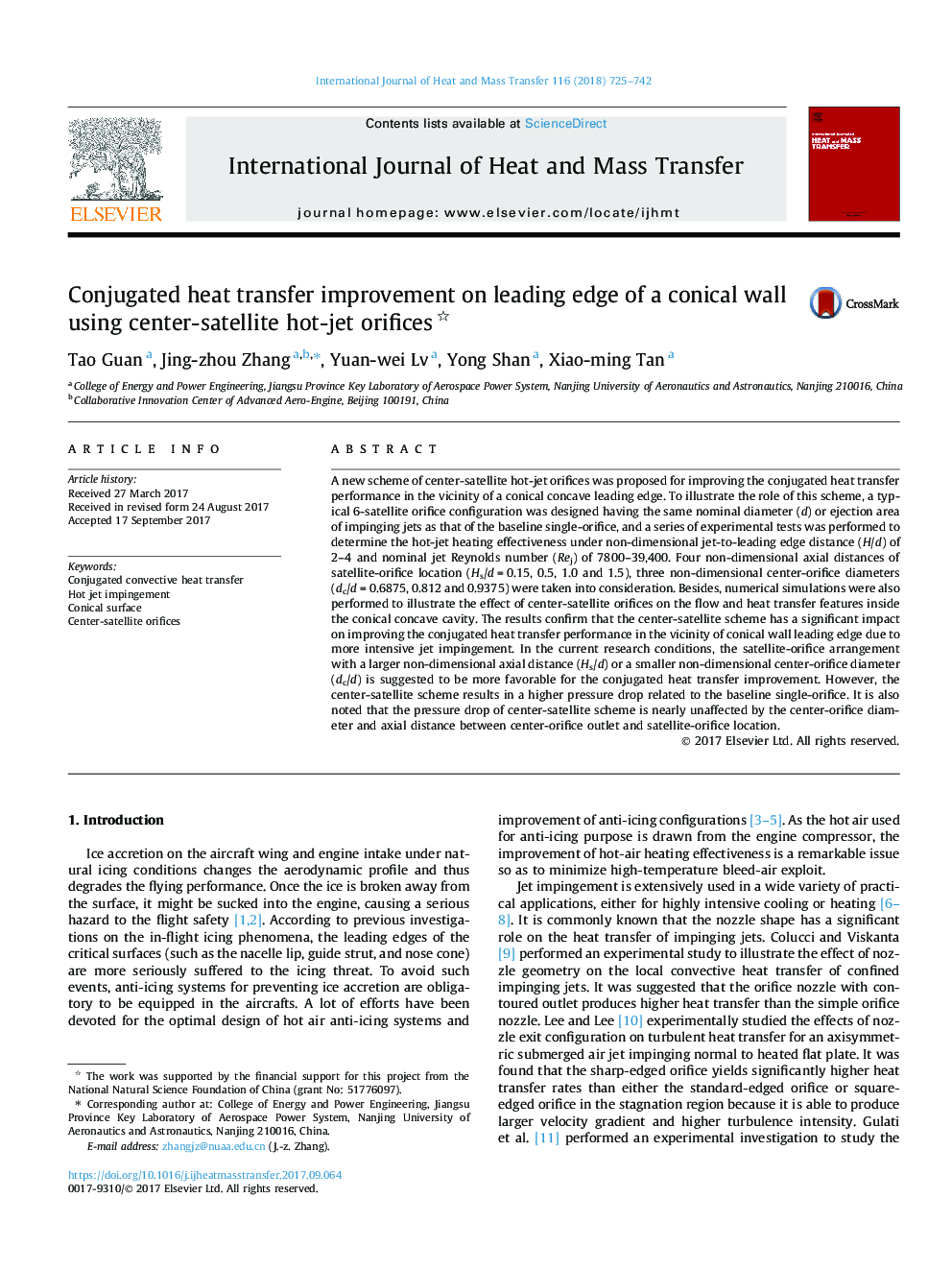| Article ID | Journal | Published Year | Pages | File Type |
|---|---|---|---|---|
| 4993795 | International Journal of Heat and Mass Transfer | 2018 | 18 Pages |
Abstract
A new scheme of center-satellite hot-jet orifices was proposed for improving the conjugated heat transfer performance in the vicinity of a conical concave leading edge. To illustrate the role of this scheme, a typical 6-satellite orifice configuration was designed having the same nominal diameter (d) or ejection area of impinging jets as that of the baseline single-orifice, and a series of experimental tests was performed to determine the hot-jet heating effectiveness under non-dimensional jet-to-leading edge distance (H/d) of 2-4 and nominal jet Reynolds number (Rej) of 7800-39,400. Four non-dimensional axial distances of satellite-orifice location (Hs/d = 0.15, 0.5, 1.0 and 1.5), three non-dimensional center-orifice diameters (dc/d = 0.6875, 0.812 and 0.9375) were taken into consideration. Besides, numerical simulations were also performed to illustrate the effect of center-satellite orifices on the flow and heat transfer features inside the conical concave cavity. The results confirm that the center-satellite scheme has a significant impact on improving the conjugated heat transfer performance in the vicinity of conical wall leading edge due to more intensive jet impingement. In the current research conditions, the satellite-orifice arrangement with a larger non-dimensional axial distance (Hs/d) or a smaller non-dimensional center-orifice diameter (dc/d) is suggested to be more favorable for the conjugated heat transfer improvement. However, the center-satellite scheme results in a higher pressure drop related to the baseline single-orifice. It is also noted that the pressure drop of center-satellite scheme is nearly unaffected by the center-orifice diameter and axial distance between center-orifice outlet and satellite-orifice location.
Keywords
Related Topics
Physical Sciences and Engineering
Chemical Engineering
Fluid Flow and Transfer Processes
Authors
Tao Guan, Jing-zhou Zhang, Yuan-wei Lv, Yong Shan, Xiao-ming Tan,
